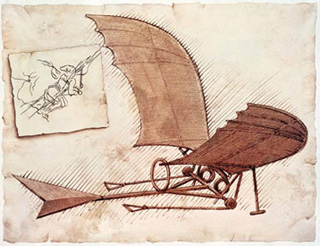
From Skills to Results
 What
it Means to Innovate in 2014
What
it Means to Innovate in 2014
Our definition of innovation— “creating value from an idea that’s new to you”—is as relevant in 2014 as ever. In the past decade or two, innovation has become a buzzword and the core concept behind many corporate initiatives. Innovation has become more familiar—something we can use and hold in our hands rather than something that happens in distant R&D labs. Still, many organizations have had difficulty with the most important element of the definition—value. Novelty, for its own sake, doesn’t lead to increased sales or growth in new markets or any of the most important strategic goals our organizations are trying to achieve. It needs to be linked to a real benefit.
Innovation, as described in our Managing Innovation workshop, can take place in any of five target areas: Product (including services and experiences), Process, Position (in the market), Platform, or Paradigm. However, people in the organization need to be clear on where they’re being expected or encouraged to innovate, how many degrees of freedom they have, how they can best move their ideas to action, and how to gain support and resources.
In 2014, innovation is as important as it has ever been and value, whether economic, social, environmental, strategic, or personal, is essential to success. Willingness to risk, to fail, to learn, and to risk once again is the key to building value and creating an organization that fosters innovation.
—B. Kim Barnes
The question for innovating then comes down to one that Nelson Soken asks, “…how can we create a culture of innovation and provide the support for moving individuals and organizations to make necessary changes?” His answer can be found in the white paper, “Innovation, a Critical Component of Business Success.”
Innovation: A Critical Component of Business Success (excerpt)
Nelson Soken, Ph.D.
According to the 2011 Booz & Company Global Innovation 1000 Report, companies with both a highly aligned culture and highly aligned innovation strategy had a 30% higher enterprise value and 17% higher profit growth than companies without alignment. What the research suggests is that a clear innovation strategy and a culture that supports innovation are critical to business success.
The challenge for organizations is to create alignment around strategy and culture to facilitate innovation...
 That’s a Steal!
That’s a Steal!
This July, Increase Your Innovation Skills.
Ready to start managing innovation or working on your influence and internal consulting skills?
Sign up for our public programs today!
Sign up before June 15 and bring a colleague for free!
 Our Global Partner: Equoranda, Grenoble,
France
Our Global Partner: Equoranda, Grenoble,
France
Developing a Culture of Innovation
Pascale Demont, Co-Managing Director, Equoranda
Equoranda has always known that creating a culture for innovation is an extremely important process for company growth. What is even more important and exciting to us is when we have the pleasure of watching our customers realize the importance of developing their own culture of innovation. It’s like watching a flock of birds form a structured V in the sky!
 A Note from Our Trainers:
A Note from Our Trainers:
Innovation in Virtual Instructor-Led Training
By Dr. Janet Lockhart-Jones
Virtual Instructor-Led Training events are not the same as webinars. In most webinars, the intent is to share information with little time for interaction and questions from attendees. Webinars often have hundreds of attendees at once.
In Virtual Instructor-Led Training (VILT), the intent is to deliver an experience equal or superior to a traditional face-to-face classroom event with usually, no more than 20-25 learners. Because of the inability of the instructor to receive visual, body language cues (unless using a webcam and even then it’s limited), the ability to capture and maintain the mindshare of the learner is critical to delivering a successful VILT learning experience. VILT Trainers must not only be content experts, they must also be masters of the virtual technology platform, know how to use their voice and questioning skills effectively, and be skilled and innovative when using proven techniques and methods that facilitate qualitative and rewarding instructor-to-learner and learner-to-learner interaction.
So, what are some of these techniques? The list includes whiteboards, polls, chat sessions, text screens, games, breakout group work, videos, fieldwork and Q&A. These are all activities that, when used well and in a timely way, can heighten learners’ interest and engagement. When used appropriately and effectively, these techniques will ignite passion and enthusiasm in the learner and leave them wanting more.
 Updates from Barnes & Conti
Updates from Barnes & Conti
It’s hard to believe that the ASTD—now called ATD (Association for Talent Development) —2014 International Conference and Expo is over. Every year we look forward to reconnecting with all of you, meeting new faces, learning, and teaching.
This year, in getting ready to celebrate our 20th year anniversary of Exercising Influence, our booth theme was #BeInfluential. If you didn’t get a chance to take Kim’s “Be Influential” Solution Session, you can watch her recently recorded webinar from the Syntax Solutions for Change Telesummit: “Be Influential! Put Your Knowledge to Work as an Internal or External Consultant.” The link is available through June 14, 2014.
To watch the webinar, follow this link and enter "community" for the password.
Exercising Influence Turns 20
We are getting ready to celebrate the 20th anniversary of Exercising Influence. To start our celebration off, we want to hear from you!
 Tell us a story about someone who influenced you in a really
important way… someone who made a huge difference
in your life. In your story, make sure to mention:
Tell us a story about someone who influenced you in a really
important way… someone who made a huge difference
in your life. In your story, make sure to mention:
- How did they do it?
- How did you respond?
- What did you learn from it?
- How did it make you feel?
- Why was it important?
We will select the most captivating stories about how someone has influenced another person’s life. The selection committee will be comprised of people who have made a difference in our field, in business, and in society.
Our decisions will be based on the following selection criteria:
- Unusual or surprising
- Significant to the individual
- Beneficial to others in the long run
- Provided a key life lesson
- Applicable to one’s own influence opportunities
1st prize: We will offer a free one-day Exercising Influence workshop anywhere in the U.S. for a non-profit organization of your choice. We will offer this workshop in your name!
2nd & 3rd prizes: A free spot in one of our Exercising Influence open enrollment sessions.
Honorable Mentions: A signed book of your choice authored or co-authored by Kim Barnes including:
- Exercising Influence: Making Things Happen at Work, at Home, and In Your Community (Wiley, 2006)
- Consulting on the Inside: A Practical Guide for Internal Consultants (with Beverly Scott) (ASTD Press, 2011)
- Murder on the 33rd Floor: A Corporate Mystery (Johari Press, 2012)
- Murder on Retreat: A Corporate Mystery (TBP Fall, 2014)
- Self-Navigation: A Compass for Guiding Your Life and Career (with Aviad Goz) (Johari Press, 2012)
Please email your stories to Rebecca Stern, rstern AT barnesconti.com
We will be publishing these stories and can’t wait to share them with you!
Like our newsletter?
For more valuable information and special offers, follow us!
June 2014
In this Issue:
- From Skills to Results: “What it Means to Innovate in 2014”
- Featured Article: Innovation: “A Critical Component to Business Success,” by Nelson Soken
- Public Program Special Offer: Sign Up Before June 15 and Bring a Friend for Free
- A Note from Our Trainers: “Innovation in Virtual Instructor-Led
Training,” by Dr. Janet Lockhart-Jones
- “Developing a Culture of Innovation,” by Pascale Demont
- Updates from Barnes & Conti: Training 2014 Conference & Expo
- Exercising Influence Turns 20
- Featured Recipe: Trout Meunière
- Featured Art: Drawing of a Glider by Leonardo da Vinci
Upcoming Open Enrollment Programs
Exercising Influence
- June 19, 2014, Berkeley, CA
Consulting on the Inside
- June 20, 2014, Berkeley, CA
Managing Innovation
- July 17, 2014, Berkeley, CA
See the full schedule on our website to register online
Recipe: Trout Meunière

In honor of Equoranda, our Global Partner in Grenoble, France, we’re featuring a classic recipe connected with the Alpine region surrounding Grenoble. Some of the best trout in France, from Alpine lakes and streams, inspired this recipe as well as its more famous cousin, Truite aux amandes or trout Aladdin (see variation with toasted almonds, below).
Ingredients:
- 4 fillets of rainbow trout, about 1/3 - 1/2 lb. each
- 1/3 cup flour or gluten-free flour mix
- 1/2 tsp. fresh thyme, minced
- 1 tbsp. fresh parsley, minced
- 1/2 tsp. sea salt
- 1/4 tsp. freshly ground black pepper
- 1 1/2 tbsp butter (or more) for browning
- Juice of 1 large lemon (Meyer lemon, if you can find it)
- 2 tsp. capers, rinsed (optional) OR 1/2 cup sliced almonds, toasted lightly
- 1 tbsp oil plus 2 tsp. butter for sautéing.
Method:
- Mix the salt, pepper, and thyme together with the flour in a deep plate or wide, shallow bowl.
- Dredge the trout fillets in the seasoned flour mix so that it is well coated.
- In a small, heavy sauce pan, melt the butter for browning over low heat. Keep the heat low, and watch the butter until it begins to brown. Remove from heat
- In a non stick (or very well seasoned) skillet, heat the oil and butter for sautéing until quite hot (the butter should stop foaming, but not brown).
- Saute the trout fillets for about 2-3 minutes on each side, depending on thickness (5 minutes total time if the fish is 1/2 inch thick at the thickest point, add minutes for thicker fish, subtract for thinner). Remove to a serving platter.
- Add the lemon juice to the brown butter mixture, and warm it up a bit. Sauce the fish with the brown butter/lemon mixture. Garnish with capers or toasted almonds and minced parsley.
Serve with boiled new potatoes and a green vegetable (asparagus would be nice). Drink a minerally, French white wine, such as a Mâcon-Villages.
Serves 4
You are receiving these emails from Barnes & Conti because you are a client, colleague, and/or friend of Barnes & Conti Associates. Inc. or you contacted us through our website, at a trade show, or via social media. Barnes & Conti does not sell, trade, or give away mailing lists or email addresses to anyone. Period.